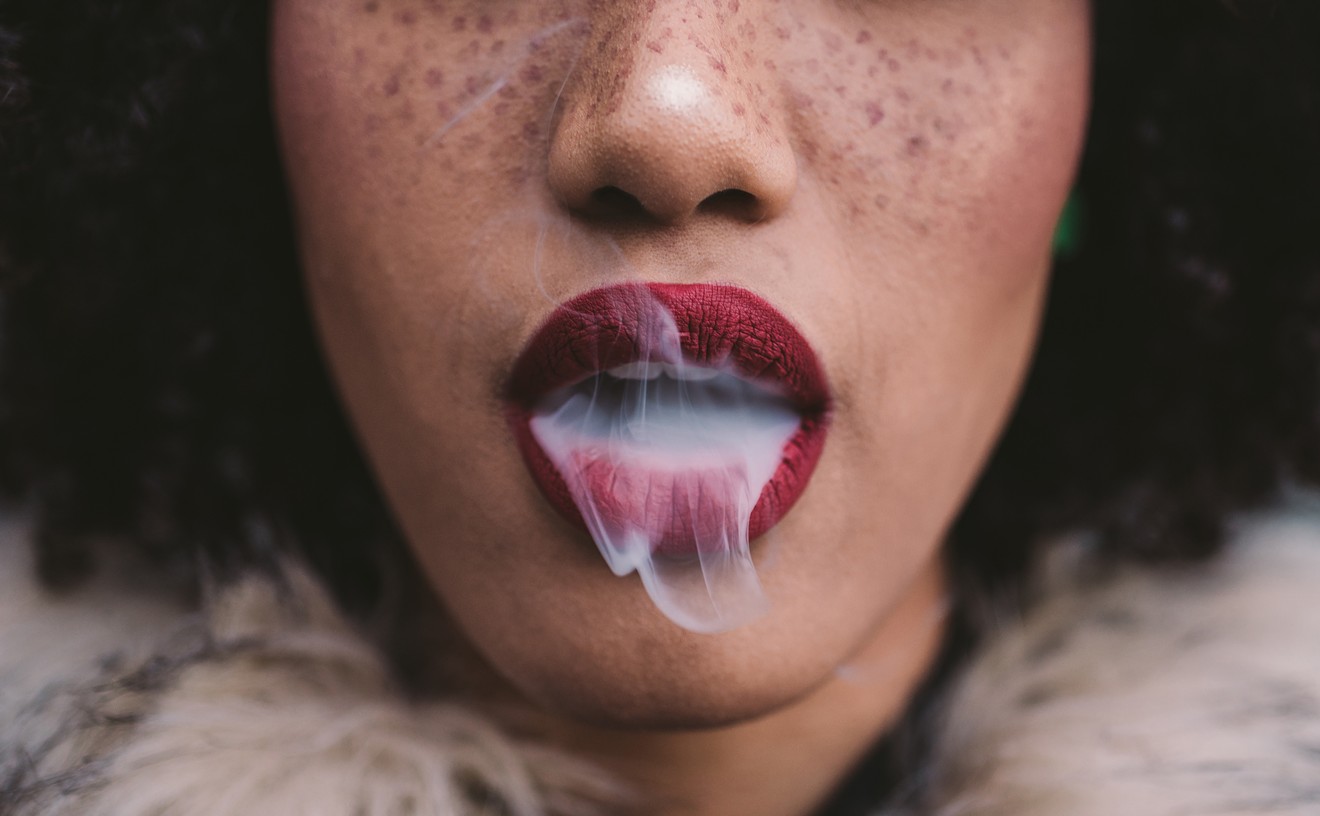Mounted on a pedestal at an oblique angle, the fuzzy cloth patch of turf in "Sod" offers a literalist take on what the brilliant academic dabbler W.J.T. Mitchell discusses in terms of "vitalism." In What Do Pictures Want? The Lives and Loves of Images, Mitchell discusses in biomorphic terms the life force behind objects and images. He turns the table on the object fetish, underscoring the false belief that manmade icons and pictures are lifeless and passive. Like a phalanx of flat Frankensteins, the television-borne and photographic images of people and events--everything from the lives of Princess Di and JFK Jr. to September 11 (if only we could include the war in Iraq)--come back to proverbially bite us on the butt in that they act upon us rather than we upon them. We weep when Di dies as though we personally knew her and recoil in horror at the image of the burning twin towers as if we were there. The images live with us and in our psyche, haunting us in our workaday lives and the unconscious of our dreams.
Briceño's work is alive in a different, more basic fashion. Her paintings, drawings and sculptures in Peel strike a strain of vitalism more in keeping with the funky ancient science of Aristotle. Their "soul" and "life energy" are connected to their truly biomorphic form. They breathe fresh new life into the flat organicism of landscape painting--a history and tradition from which Briceño has self-consciously birthed them. In "Sponge," Briceño fills and stuffs the flaccid form of the painterly picturesque, making a landscape where the trees smoothly bubble forth into our three-dimensional space. Combining sewing, painting and sculpture, Briceño animates the surface depiction of a spartan forest. Brown tree trunks bulge out from the white canvas while also casting a shadow. She packed the fabric trees with stuffing while painting the shadows in watery gray. Briceño has placed in wonderfully dumb fashion a garden of small round felt "sponges" in yellow and orange on the bottom portion of the canvas. With a few casting shadows, and markedly in the wrong direction, they declare a forceful counterpoint of fakery to the only slightly more real trees above.
Hailing from Austin, Briceño is hard-bent on putting herself on the map of the greater art world. Her training is both Texan and extra-Texan, having graduated with a BFA from UT and MFA from the Art Institute of Chicago. Though recognition of her talents has been thus far largely limited to Texas, there has been much of late. She was accepted to show in the highly competitive exhibition I-35, for Texas-based artists 35 or younger. It opens at Dunn and Brown Contemporary later this month. She also has work installed at the Dallas Center for Contemporary Art as part of the show New Art in Austin: 22 to Watch. In fact, the extensive piece at the Contemporary highlights even more powerfully than Mighty Fine Arts her talent for making bizarre cute form. Made up of 14 of the cutesy, pod-like felt hillocks, "Grass Islands" lines the wall, aping the hallowed tradition of landscape painting while, in its gnome-scaled otherworldliness, completely departing from it.
Beyond the picturesque and landscape painting, Briceño's work resonates within an ever-unfolding tradition of fabric art. Though looking nothing like batik, Briceño similarly dyes fabric. Rather than rough-hewn browns, though, Briceño's palette is bright: She colors and re-colors felt in variegated shades of yellow, orange and green. The German painter of an earlier generation, Sigmar Polke, is famous for substituting canvas with everyday fabrics, sewing together patterned swatches of bed sheets and tablecloths and then silk-screening and drawing over them. Mike Kelley's stuffed-animal sculpture and dirty-cute-toy and dirty-cute-blanket combos also come to mind. The feminist theme of sewing--that it has been conventionally understood as women's work--must not be overlooked. Briceño's work may be seen in the light of Tracey Emin's, with the raucousness of the latter casting the former in a shadow. Emin's "Everyone I Ever Slept With 1963-1995," her orifice-shaped blue tent on which she sewed the names of her sex partners, is fueled by a gratuitous in-your-face punch that is lacking in Briceño.
Most similar to Briceño is the work of Saskia Jorda, the young New York-based artist and former resident of the almost-dead South Side on Lamar artist residency program. Like Jorda's sewn and stuffed creatures that exhibited at And/Or Gallery in March, Briceño's work comes across as proof of a parallel universe of scientific development. Her pod-islands give form to Darwinian evolution in screwy hallucinatory drag.
Briceño's work is vital like a candy-colored, hand-sewn hothouse botanical garden. Unlike the brash and politically motivated vitalism at work in W.J.T. Mitchell's thesis, her work is delicate and not overtly political. For Mitchell, the vitalism of images and objects in the contemporary moment is at root driven by the global network of digital and satellite technology. In relating the life and loves of photographic icons and things to the greater nexus of globalization, Mitchell injects his theme on perception with a heavy dose of political economy. We might fault Briceño for failing to do the same. I'd like to argue, though, that Briceño's work operates according to a separate and distinct set of political forces that are no less related to her specific strain of vitalism. Briceño's landscapes and plant-dollies are "cute" like Hello Kitty and, more potently, the work of the Japanese artist Takashi Murakami. Briceño's objects stand on end with "kawaii," the Japanese word for "cuteness." They perform through meekness; they make waves by way of pluck and the charms of absurdity.










